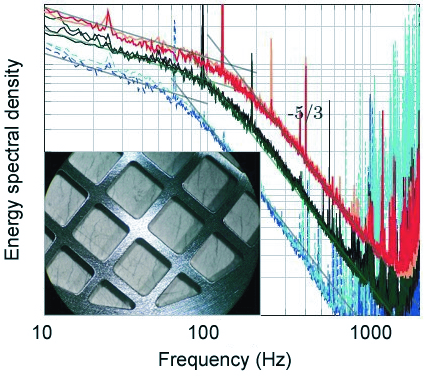Turbulent flow transfers its energy from large vortices to smaller ones, down to a limit where the energy is dissipated by viscous friction: the "energy cascade". Kolmogorov's law describes the spectral distribution of energy between these scales. A priori, the transfer mechanism in a superfluid is different. Yet, the only reference study available (1998) argues that, at the intermediate scales, the Kolmogorov law is respected in the superfluid helium.
Why did we try to confirm this experiment? Because the principle of measuring the velocity distribution makes use of a pressure sensor, thus making it extremely sensitive to the quality of flow and pressure fluctuations. We have produced a grid turbulence flow, homogeneous and isotropic, in the test loop of SBT dedicated to fundamental studies on turbulence in helium at low temperatures. Institut Néel has designed specific sensors. Result: after 2 decades, the Kolmogorov power law has again been confirmed! We are now working to get closer to the limit size (the dissipative scale).

Abscissa: Frequency is inversely proportional to the size of the vortices (100Hz ~ 2mm).
Ordinate: The spectral energy density is related to the velocity distribution.
The exponent -5/3 corresponds to the Kolmogorov scaling law. The viscous dissipation is to be explored at a higher frequency.
Insert: the grid used to generate turbulence has a mesh of 3mm.